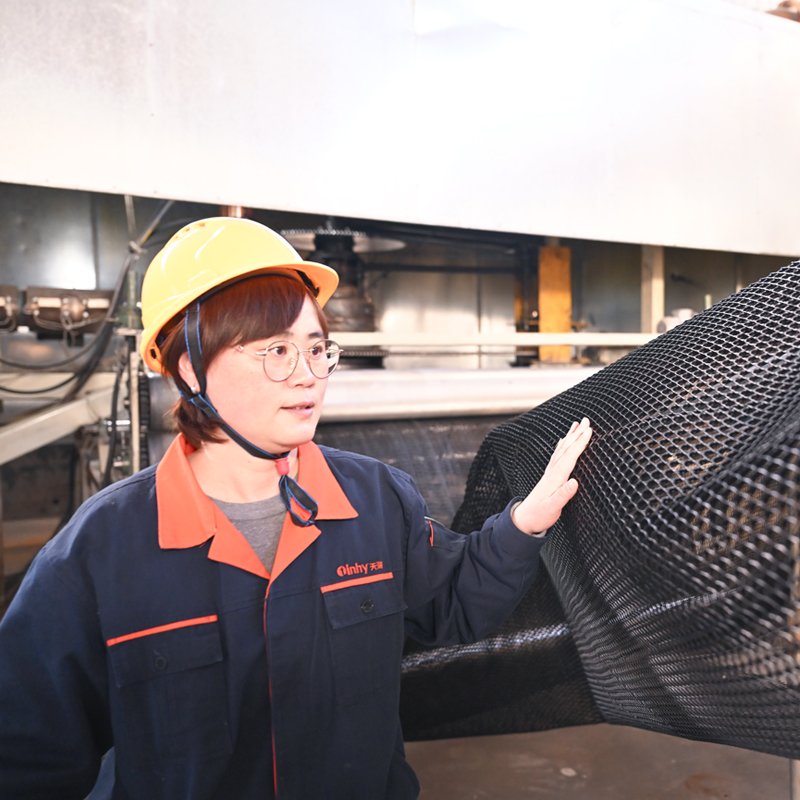Retaining walls are a commonly used structure in civil engineering, primarily designed to resist the lateral pressure of soil and prevent phenomena such as soil landslides and collapses. With the development of engineering technology, geogrids, as a new type of reinforcing material, have been widely applied in the construction of retaining walls. This article will explore the application, advantages, and key design considerations of geogrids in retaining walls.
1. Definition and Classification of Geogrids
Geogrids are mesh structures made of polymers, steel, or other materials, featuring excellent tensile strength and durability. Based on different materials, geogrids can be classified into plastic grids, steel grids, and glass fiber grids, among others. Plastic grids are the most common type, especially suitable for civil engineering projects such as retaining walls due to their lightweight nature, corrosion resistance, and UV resistance.
2. Role of Geogrids in Retaining Walls
The primary function of geogrids in retaining walls is to enhance the shear strength and stability of the soil. By embedding geogrids into the soil, the stress distribution within the soil can be effectively dispersed, improving the overall stability of the soil mass. Geogrids can reduce soil settlement and deformation, thereby extending the service life of retaining walls.
3. Advantages of Geogrids
(1) Enhanced Soil Strength
Geogrids can effectively improve the tensile strength of soil, preventing the soil mass from easily undergoing failure under load.
(2) Improved Stability
By integrating geogrids with the soil, a unified supporting structure can be formed, increasing the stability of retaining walls and reducing the risk of landslides.
(3) Easy Construction
The installation of geogrids is relatively straightforward, enabling rapid construction and shortening the project duration while reducing construction costs.
(4) Environmental Friendliness
The materials used in geogrids typically possess good environmental characteristics and do not cause pollution to the surrounding environment.
4. Key Design Considerations for Retaining Walls
When designing retaining walls, the rational application of geogrids must be fully considered. Here are some critical design considerations:
(1) Determining Design Parameters
Before design, detailed geological surveys should be conducted to determine the physical and mechanical properties of the soil, including soil density, internal friction angle, and cohesion, providing basic data for subsequent design.
(2) Selecting Appropriate Geogrid Types
Based on soil type, loading conditions, and environmental factors, suitable geogrid types should be selected. Different types of geogrids vary in terms of strength and durability, requiring selection based on specific circumstances.
(3) Rational Arrangement of Geogrids
In the design of retaining walls, the quantity, number of layers, and spacing of geogrids should be reasonably arranged. Generally, geogrids should be evenly distributed across different soil layers to ensure the overall stability of the soil mass.
(4) Considering Drainage Issues
The design of retaining walls should also incorporate a drainage system to mitigate the impact of water on the soil. Proper drainage design can effectively reduce the moisture content of the soil, thereby decreasing lateral pressure.
5. Construction and Maintenance
During construction, geogrids should be installed strictly in accordance with design drawings, ensuring correct positioning and orientation. Construction personnel should regularly inspect and maintain retaining walls to ensure their safety and stability during use.
Through an analysis of the application of geogrids in retaining walls, it is evident that geogrids offer significant advantages in enhancing the stability of retaining walls and increasing soil strength. In future engineering practices, with continuous technological advancements, the application of geogrids will become even more widespread, providing strong support for the safety and sustainable development of civil engineering projects.


